Sanctioning Collapse: The Impact of Secondary Sanctions on the Russian Energy Sector
In 2014, Russia shocked the international sphere with an invasion and subsequent annexation of Crimea, a strategically significant peninsula in Southern Ukraine. Fearing further Russian aggression and attempting to send a signal of unity and deterrence, a coalition of Western nations unleashed a fury of sanctions, targeting a variety of facets of the Russian economy, most notably the energy sector. Encompassing everything from travel bans to asset freezes, the sanctions appeared rapidly and grew throughout the year as tensions rose, eventually (for the U.S.) coming to include a ban on all exports to Crimea.
While unified initially, the ever-shifting sanctions regime slowly became destabilized, with sanctions strategies diverging among the various participating nations (primarily between the U.S. and members of the E.U.). The disagreement stemmed from the use of a novel economic weapon brandished by the Obama administration: secondary sanctions. Sanctions, as a foreign policy tool, are economic penalties imposed on countries or non-governmental entities (such as companies, NGOs, and individuals) that can come in a variety of forms ranging from tariffs to limitations on certain financial transactions to all out embargos. The term sanctions normally refers to primary sanctions, which are imposed by the US government and are either direct actions (e.g. travel bans or asset freezes) taken against the sanctioned body or limitations on the actions US actors can take (e.g. restrictions on who US persons can invest in, buy from, or sell to). Secondary sanctions, conversely, are threats to apply primary sanctions to foreign third parties. Essentially, secondary sanctions extend the restrictions placed on US actors to apply to entities outside of both the US and Russia, “[forbidding] any transaction in U.S. dollars and… any… business with a country, persons, or organization under the sanction regime of the United States… To put it simply, these sanctions also target foreigners” (Abdelal and Bros). In the case of Crimea, the US intended to compel European compliance with its sanctions regime in order to maximize damage to the Russian economy. Despite the onslaught of secondary sanctions on Russia’s oil and gas sector, the nature of the penalties and Russia’s response to them have minimized short term economic repercussions, although more dramatic impacts may soon occur.
While European countries, because of their proximity to Crimea, felt most directly threatened by the annexation, their response was more cautious than their American allies. The European calculation incorporated a unique factor: its own energy market. While the US energy sector competes with Russia’s, the European economy depends on Russian energy imports. Eurostat, the statistical commission headed by the EU, itself admits:
The stability of the EU’s energy supply may be threatened if a high proportion of imports are concentrated among relatively few external partners. In 2018, almost two thirds of the extra-EU’s crude oil imports came from Russia (30 %), Iraq (9 %) and Saudi Arabia, Norway, Kazakhstan and Nigeria (7 % each). A similar analysis shows that almost three quarters of the EU’s imports of natural gas came from Russia (40 %), Norway (18 %) and Algeria (11 %), while almost three quarters of solid fuel (mostly coal) imports originated from Russia (42 %), the United States (18 %) and Colombia (13 %). (“From Where”)
Across the board, Russian imports dominate European fossil fuels. European countries grandfathered businesses closely tied with Russian firms through expansive sanction carve outs to maintain their supply chains. American secondary sanctions, which didn’t share the European exceptions, conflicted with Europe’s decision to protect its own interests, creating a catch-22 for European industry. With more stringent rules, American secondary sanctions compelled a choice between cutting off Russian firms or facing economic punishment from the US. Ignoring European wishes, the US continued to enforce—and even expand—its secondary sanction program targeting the energy sector, identifying it as crucial to the broader sanction strategy.
The Western sanctions strategy targeted the Russian energy sector because it is the foundation of the Russian economy, contributing the lion’s share of its tax revenue and GDP. Over the past couple of decades, Russian “oil and gas revenues have contributed directly to anywhere between 10 and 25 percent of GDP, depending on the value of oil and gas sales at any given point in time” (Connolly 82). Yet, up to this point, the sanctions regime has not yet materially harmed the Russian energy sector. The sector has fluctuated widely since 2014, but sanctions are not the sole cause of that turbulence.
In 2014, the energy sector hit rock bottom. While this nadir coincided with the imposition of sanctions, a variety of other, possibly more significant, factors contributed to the decline. For example, in addition to the imposition of sanctions, late 2014 saw a collapse in global energy prices, simultaneous with the drops in Russian oil and natural gas production. Oil prices were only a piece of the puzzle. “All combined… falling oil prices, debt repayment pressures, policy mistakes, and lack of access to foreign credit markets created a perfect storm for the Russian financial market in mid-December 2014, resulting in the collapse of the ruble, which lost 50 percent of its value from the beginning of the year” (Aleksashenko). While sanctions added an extra pressure point, mismanagement and destabilization of the global oil market combined seem more than capable of causing the industry to collapse on their own.
Over time, as oil prices rose and Russian policy morphed, the impact of the energy recession slowly subsided. That recovery in and of itself doesn’t signal anything in particular about the effect of sanctions. In order to determine that effect, we can look at both federal budget revenues (which signal the strength of a sector at a given time) and investment in the targeted sector (which should be representative of whether secondary sanctions, the primary target of which is cash inflow, played an outsized role). An analysis of Russian tax revenues shows that government receipts from the energy sector rebounded, albeit somewhat slowly. According to Tatiana Mitrova, fellow at the Center on Global Energy Policy, revenues hit their lowest point since 2004 in 2015 and 2016 as the sector rebuilt and the government gave tax breaks to industry, yet they returned to 39% of total revenues by 2017, starting an upward trajectory back towards pre-crisis levels (Mitrova 2019). While protracted, this rebound indicates the energy recession subsided, showing that Russia survived whatever effects sanctions may have had.
Data on energy sector investment supports this conclusion. In fact, per Bud Coote, a senior fellow at the Atlantic Council, investment in Russian oil production rose for three consecutive years after 2014, with the sector setting a record for square footage drilled in 2016, signifying a rebound that brought energy production above pre-2014 levels (Coote). For many proponents of sanctions, this surge in investment might have come as a shock; Russia shouldn’t have been able to generate so much investment under intense international economic pressure. Yet, luckily for Russia, it had an ace up its sleeve. According to Coote, by 2014, Russia was sitting on top of a two-decades long buildup in financial reserves, amounting to over half a trillion dollars. After the imposition of sanctions, the state dug into those reserves, replacing the foreign capital that would have otherwise funded operational costs for energy production. By 2015, less than a third of their reserves remained (Ibid.). The “buildup… enabled Moscow to limit the impact of sanctions by buttressing the financial stability of its banks and providing funds to help offset the large debts of state-owned companies. Russia also used its financial reserves to support investment, including in the energy sector” (Ibid.). While overall investment did leap after 2014, state funds sustained the recovery, not foreign ones. If another crash happens before Moscow rebuilds its reserves, Russian industry might not be so lucky.
The absence of an energy recession attributable to sanctions isn’t particularly surprising; secondary sanctions weren’t intended to immediately collapse the sector. Instead, they deter third party actors from providing Russia access to tech and capital, hampering the ability of Russian firms to start expensive new drilling ventures in novel oilfields. These sanctions also can prevent Russian companies from developing sophisticated drilling and refinement tech on their own, as they need capital in order to pursue research and development. As a result, the sanctions both siphon off Russian access to foreign tech and impair its ability to create such tech domestically.
While secondary sanctions represent an explicit risk for potential investors in the Russian energy sector, there’s a second, less obvious mechanism through which sanctions decrease foreign involvement. By creating stigma and uncertainty around Russian industry, these sanctions impose a financial risk in addition to the risk of direct punishment. Specifically, there is a “fear outside Russia that sanctions could be expanded at a later point to encompass a wider range of companies” (Connolly 103), meaning that investors steer clear of even non-sanctioned entities. As this phenomenon continues, the negative reputation surrounding the sector grows, creating a positive feedback loop towards decreased investment.
The loss of tech and capital didn’t impact short term production, but it will impact the future of the energy sector. This was no accident. “On the U.S. and European side, in 2014, the logic was the following: not affecting current Russian oil exports, which could disrupt supplies and potentially drive up global prices, but undermining Russian oil production over the long run” (Abdelal and Bros). Not wanting to jeopardize their own economies with the fallout of a Russian depression, American and European leaders opted for a more reserved approach. They “concentrated on constraining [Russia’s] long-term production potential… [restricting] Western participation in projects involving onshore unconventional, deepwater, and Arctic exploration. A carve-out for ongoing Russian oil and natural gas exports avoided creating supply disruptions or undermining the stability of the global economy” (Blanc and Weiss). Some would even say sanctions protected Russian interests in the short term. As Coote puts it, “high-cost resource development projects, which are generally the ones sanctioned, might well be unprofitable in the current oil price environment. To some extent, sanctions are probably saving Russia money it is better off not spending at this time” (Coote). Yet Russian firms can’t put off those development projects forever, meaning sanctions still pose a visible danger to Russian industry.
Predictably, Russia saw the threat of losing capital and tech from sanctions and developed a two-pronged damage limitation strategy. First, Russia turned inwards, developing domestic tech expertise, increasing knowhow for drilling and refining and insourcing equipment to manufacturers within its borders. As Richard Connolly, director of the Centre for Russian, European, and Eurasian Studies at the University of Birmingham, explains, this strategy of “russification” wasn’t meant to create an entirely independent and self-sufficient energy sector (as that was almost certainly infeasible), but rather to reduce susceptibility to sanctions (Connolly 97). By reigning in Western influence (which flowed from Russian dependence on Western financing, equipment, and expertise), Russia could both preempt more stringent future sanctions and strengthen its own domestic industry.
Even if entirely successful, the shift towards domestic supply chains would not resolve Russian fears. European nations buy a large portion of Russian oil and gas. As long as Europe remains the dominant destination for Russian energy exports, the West will inevitably have a powerful sway over Russian industry. In order to combat this influence, Putin initiated the second prong of his strategy: a state led push to get Russian industry to pivot towards Asia. If successful, Russia would access new markets devoid of primary sanctions and less deterred by secondary ones (as Asian investors are less closely tied to American financial institutions and partnerships than European investors are). This, according to Connolly, was not necessarily a new policy goal, but it was a renewed interest for Russia, with officials dubbing the pivot a question of national security in 2014 (Connolly 104). Between freeing supply chains of Western association and releasing the sector from Europe’s stranglehold on demand, Russia would significantly reduce both foreign policy and economic concerns tied to sanctions. The only problem: a ticking clock to get that done.
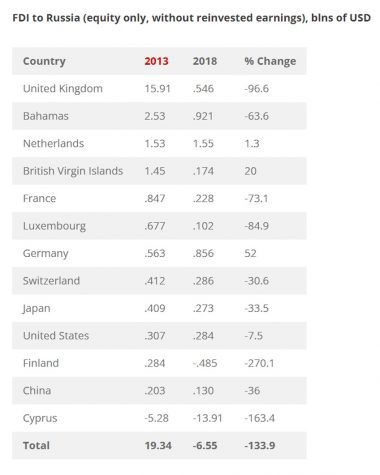
While sanctions have had limited material effect to date, the tides may turn in the near future. As noted above, the primary impact of secondary sanctions is to diminish capital, or Foreign Domestic Investment (FDI), flowing into Russia, something they have been remarkably effective at doing. According to Nicholas Trickett, an associate scholar at the Foreign Policy Research Institute and editor in chief at BMB Russia, “all estimates of Russian FDI in the past five years show the trendlines pointing south. Based on official Central Bank statistics, FDI stood at roughly $22 billion in 2014 and dropped to $8.8 billion for 2018” (Trickett). Even worse for Russia, per Trickett, is that the trend shows no sign of stopping, as “sanctions are seen as a permanent feature of the operating environment in Russia, and Western businesses see no end in sight to pressure on their interests in the country” (Ibid.). The drop isn’t limited to American investment. Among the top 12 sources of FDI to Russia (during the 2013-2018 period), investment decreased nearly across the board, with a net inflow of cash in 2013 turning into a net outflow in 2018 (see chart) (Ibid.). Despite this loss of capital, Russian industry still operates in limbo, taking advantage of a grace period before decreases in FDI harm production.
Inevitably, Russian firms will have to modernize tech and find new oilfields to survive. That time may come sooner than Russia hoped. “In the oil industry, production in many older oilfields is either diminishing or forecast to decline in the near future. This means that production will have to be replaced by Russia’s yet untapped ‘frontier’ oil reserves… mainly in the Arctic… it was these very deposits… targeted by Western sanctions” (Connolly 82). Unused drilling sites require especially expensive extraction tech and the development of entirely new infrastructure, making them much more cost-intensive than running previously established sites. Under usual circumstances, foreign capital would fill the gaps in domestic Russian financing, allowing a shift to more bountiful oilfields. Under sanctions, that foreign capital isn’t available.
Unfortunately for Russia, a reprieve from the US is unlikely, with President Biden announcing a new wave of sanctions in April, an action that indicates American willingness to take more aggressive actions in the future. Of the new sanctions, “the most significant… was to stop American financial firms from dealing in newly issued Russian debt, a restriction that goes into effect on June 14” (Kramer and Sanger). For Russian companies, this represents yet another barrier—not to mention one that’s coming at the wrong moment. As debt builds up, Russian companies can’t afford long periods of exploration and development (during which there are high costs and little revenue). As such, they become less likely to enter new ventures and start up new oilfields—the exact thing firms need to be doing right now to save their industry.
One could argue that sanctions will have the unintended consequence of strengthening the Russian oil sector in the long run. While sanctions may prevent Russia from attracting foreign capital and expertise, its government should be capable of directing its own citizens towards whatever industries it chooses via subsidies, tax incentives, and deficit spending, eventually rejuvenating its energy sector and freeing it from over-reliance on foreign cash, supplies, and expertise. Such goes the logic of protectionism, “as… an economy deprived of external revenues should turn into a more efficient and competitive one. However, such an option seems to be impossible in Putin’s Russia due to endemic corruption” (Inozemtsev and Zhuchkova). In fact, between the high percentage of energy revenue funneled by the Russian state into the federal budget, pervasive distrust of business throughout the Russian populace, and Putin’s economic strategy centering on “stability,” Russia would need to go through a paradigm shift in government funding and strategy to even have a chance have a chance at developing domestic industry to the point where it would be self-sustaining (Ibid.). Russia itself appears to consider this hope infeasible, as it has made no signs of an attempt to protect Russian industry in the form of tariffs or other government incentives. In fact, the very existence of a resource-intensive and internationally oriented pivot to Asia contradicts the goal of protecting and nurturing its domestic industry.
The limited, reactionary form of protectionism employed in response to sanctions, Putin’s “russification,” doesn’t go nearly far enough to build up a self-sustaining domestic industry, but even if russification were successful, another issue would remain: demand. Russia’s Asia pivot presents the only alternative for replacing European buyers. This pivot is happening slowly, if at all. During the 2013-2018 window, annual FDI from China, Russia’s primary Asian investment prospect, decreased by 36% (Trickett). As Trickett explains, “China remains a skeptical investment partner, as its business community struggles to find returns on the Russian market. Though China’s overall investments have risen [since 2018]… China’s turn away from the acquisition of shares in oil giant Rosneft has likewise signaled concerns about getting too close to state-owned firms in Russia” (Ibid.). Doubts about the efficacy of the Asia pivot don’t end there, as Western sanctions represent a danger even in a world in which FDI does shift towards Asia. As Mitrova puts it, “sanctions affect not only the companies on the sanctions list, but all Russian energy companies whose credit ratings had been lowered because of the sanctions. This has increased the cost of borrowing from… Asian markets, since the financial institutions… are also very cautious toward dealing with Russia and they are ready to take a risk only at a high price” (Mitrova 2016 10). Additionally, Asian investors would need to consider the value of business with Russian firms in the context of the threat of the US imposing secondary sanctions. Although this might not be as risky for Asian firms who are on average less closely tied to America than European firms are, it still begs the question of whether investors will view business with a dying Russian oil sector worth sacrificing potential Western ventures. While a transition toward Asian markets may eventually occur, the minimal shifting to date casts doubt on whether Russia has time to wait.
Because of the imminent expiration of oilfields in use now, Russia desperately needs cash to set up new ventures before current ones dry out. Otherwise, the entire economy could falter. At the moment, “its economy is so lopsided that if Russia [stopped] supplying oil or gas to foreign markets, the country’s economy will simply collapse… The sanctions have thus activated in Russia a dormant virus of self-isolationism, and now it has begun its destructive work that may determine the fate of the country for the coming decade” (Inozemtsev and Zhuchkova). Russia is locked in a quagmire: unable to cut off Western participation in its supply chain, incapable of risking the loss of European demand, and powerless to access sufficient new markets in Asia. But while it seeks to extricate itself, time is running out.
Works Cited
Abdelal, Rawi, and Aurelie Bros. “The End of Transatlanticism?: How Sanctions Are Dividing the West.” Horizons: Journal of International Relations and Sustainable Development, 2020. JSTOR, www.jstor.org/stable/10.2307/48573754. Accessed 15 Feb. 2021.
Aleksashenko, Sergey. Have Sanctions Hurt the Russian Economy? Atlantic Council, 2016. JSTOR, www.jstor.com/stable/resrep03689.8. Accessed 17 Mar. 2021.
Blanc, Jarrett, and Andrew S. Weiss. U.S. Sanctions on Russia: Congress Should Go Back to Fundamentals. Carnegie Endowment for International Peace, 1 Apr. 2019. JSTOR, www.jstor.org/stable/resrep20963. Accessed 3 Nov. 2020.
Connolly, Richard. Russia’s Response to Sanctions: How Western Economic Statecraft Is Reshaping Political Economy in Russia. Cambridge UP, 2018.
Coote, Bud. Impact of Sanctions on Russia’s Energy Sector. Atlantic Council, 2018. JSTOR, www.jstor.org/stable/resrep16783.7. Accessed 24 Apr. 2021.
“From Where Do We Import Energy and How Dependent Are We?” Shedding Light on Energy in the EU, 2020 ed., Eurostat, 2020, ec.europa.eu/eurostat/cache/infographs/energy/bloc-2c.html. Accessed 22 May 2021.
Inozemtsev, Vladislav, and Yulia Zhuchkova. The Future of the Economy and the Energy Sector. Edited by Hiski Haukkala and Nicu Popescu, European Union Institute for Security Studies, 2016. JSTOR, www.jstor.org/stable/resrep07087.6. Accessed 16 Mar. 2021.
Mitrova, Tatiana. Russia’s Energy Strategy. Atlantic Council, July 2019, css.ethz.ch/content/dam/ethz/special-interest/gess/cis/center-for-securities-studies/resources/docs/AtlanticCouncil_Russias_Energy_Strategy.pdf. Accessed 23 May 2021.
—. Shifting Political Economy of Russian Oil and Gas. Rowman & Littlefield, 2016.
Sanger, David E., and Andrew E. Kramer. “U.S. Imposes Stiff Sanctions on Russia, Blaming It for Major Hacking Operation.” New York Times, 15 Apr. 2021, www.nytimes.com/2021/04/15/world/europe/us-russia-sanctions.html. Accessed 19 Apr. 2021.
Trickett, Nicholas. “Russia’s FDI Outlook Grim, with No Chinese Rescue in Sight.” Russia Matters, Harvard Kennedy School Belfer Center for Science and International Affairs, 11 July 2019, www.russiamatters.org/analysis/russias-fdi-outlook-grim-no-chinese-rescue-sight. Accessed 23 Apr. 2021.

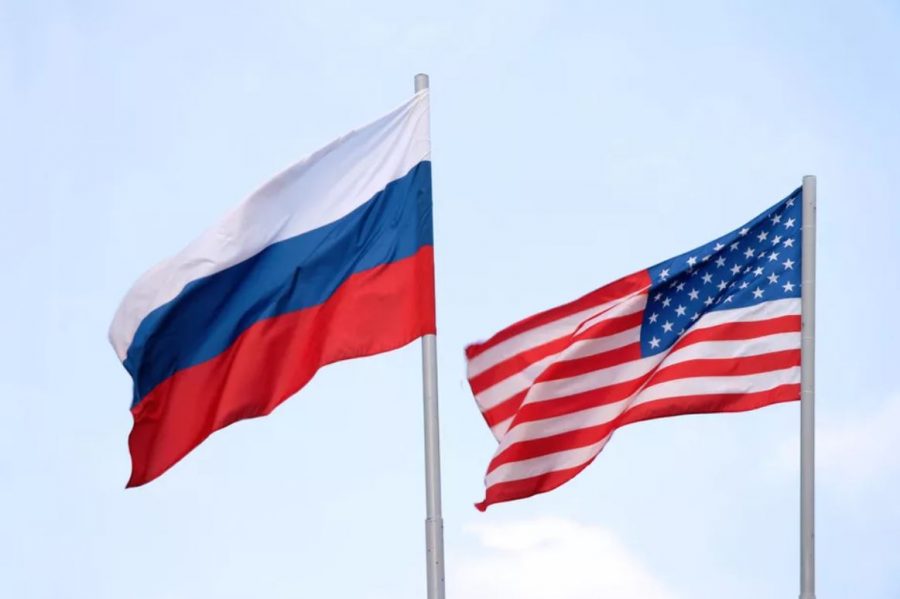

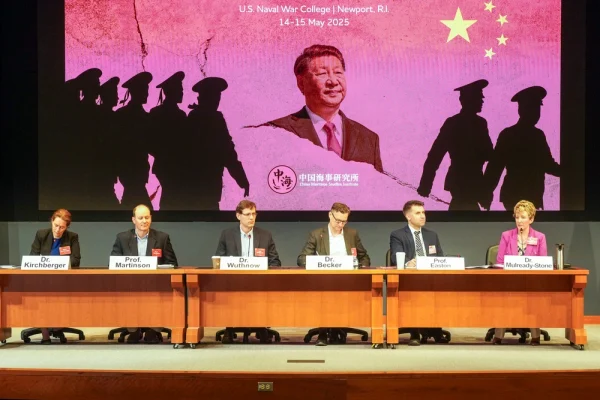
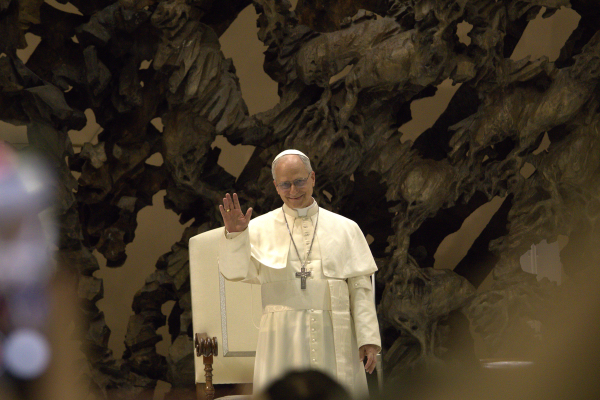
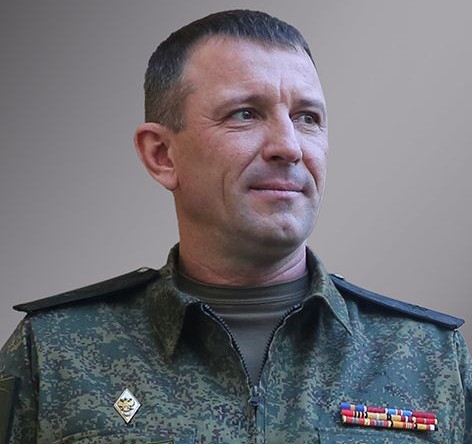
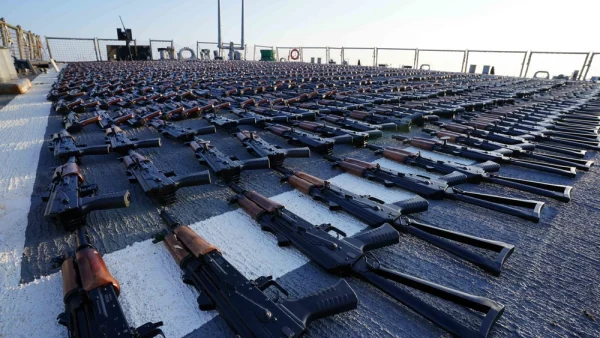
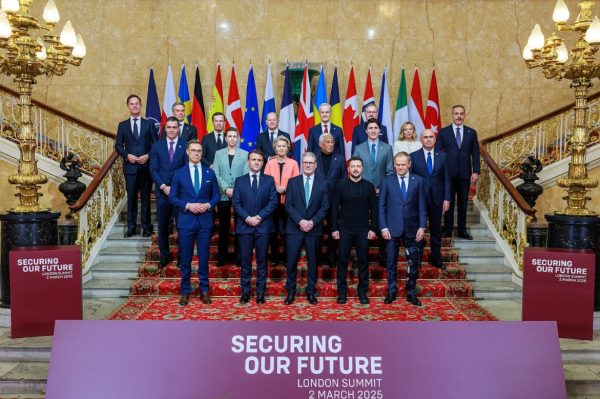
Glenbrook North Debate
Nov 10, 2021 at 10:32 pm
Keep up the good work, Brendan.